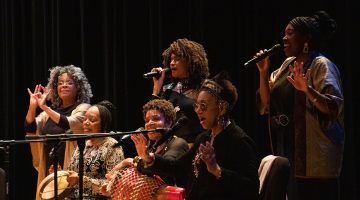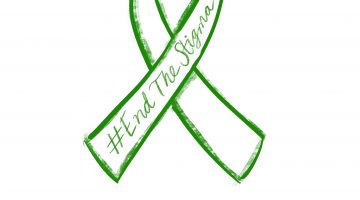So there was this guy I dated. He was a co-worker I had been friends with for years at that point. He had to ask me out twice before I said yes. I was then quickly dumped for no real stated reason. If I were to guess, it was most likely for being boring, which quickly turned into, well, crazy. That technically fixes the boring problem!

Brooke Germain/Nevada Sagebrush
The illustrative story of a breakup.
At some point, he started dating a new co-worker. I now, thankfully, have absolutely no clue what he’s doing with his life. So—quite naturally and only semi-ironically—the soundtrack to my mood swings post breakup was of utmost importance.
Last year, I started making monthly playlists of whatever I was listening to that month. Thanks to the fact that the Spotify Web Player lets you see the exact date you added a song, I have been able to compile some fun statistics.
The first song I added to my playlist after the breakup was “Good Girls Go Bad” by Cobra Starship. I do not at all remember being in a very “Good Girls Go Bad” by Cobra Starship mood, but I find the addition of “Chasing Cars” by Snow Patrol a few days later to be a thousand times more embarrassing.
There are a number of other songs that got abused during this period: “Champagne For My Real Friends, Real Pain For My Sham Friend” by Fall Out Boy, “Dead!” by My Chemical Romance—I felt quite strongly about this one—and “Gives You Hell” by The All-American Rejects.
But, what about my peers? Where do the all important musical priorities of others lie when losing someone?
Laura, my roommate, has broken up and gotten back together with her now ex-boyfriend on a few occasions. In their off-periods, her tracks have ranged from from “Truth Hurts” by Lizzo, to “Lying Is The Most Fun A Girl Can Have Without Taking Her Clothes Off” by Panic! At The Disco. Her music taste even went back down to the lows of “Take Me To Church” by Hozier and “Somebody That I Used To Know” by Gotye, and back up to the lighter side with “The Sign” by Ace Of Base.
Jaedyn Young, The Nevada Sagebrush’s Arts and Entertainment Editor, also took a mixed approach, with somber tracks like Adele’s “Hometown Glory” being mixed with angrier tracks such as “Favorite Crime” by Olivia Rodrigo, Gabby Barrett’s “I Hope” and the TikTok favorite “Maneater” by Nelly Furtado.
Emerson Drewes, Sagebrush Editor-in-Chief, took a more nostalgic, indie-sounding route with depressing tracks like “A Song About A Girl I No Longer Know” by The Bedside Kites and “Getting Better” by Twin Peaks.
It’s strange to see similar situations manifest wildly different expressions of grief.
When I was in the deepest parts of my personal, hellish trench, someone—whether it be me or him would be up for debate—would have ended up needing medical attention had I decided to express my frustration through downer music as opposed to the Warped Tour Greatest Hits.
I initially had the idea for this article several months ago while I was still beyond livid about what happened. Now that I have forgotten about what exactly I was so upset over, it’s almost charming to peer back at someone who both acted entirely different from present-day me – or so I hope. This was someone who still shared the tendency to refuse to lose that annoying, relentlessly ironic aspect of themselves because they were bawling their eyes out every night.
On the other hand, sad outpourings manifest as earnest expressions of loss for some of us. Post-breakup, some people need to be in knee-deep, to take a look at their emotions and are unable or unwilling to afford the relief of something lighter. Both are just different genres of coping with something that will refuse to instantly heal regardless of what you try.
There’s something liberating about feeling seen by a piece of work, though. That would explain why relationships are such a popular theme across all types of storytelling.
Love is relatable and intense, and even the most uncreative people find themselves able to create narratives and daydreams relating to it.
Perhaps if we all became perfectly rational creatures, we would develop more helpful ways to work out intense emotions so as to not leave the responsibility to artists as if they’re personal babysitters.
It seems, however, our affection for love is only bested by our need for someone to notice it.
Opinions expressed in The Nevada Sagebrush are solely those of the author and do not necessarily express the views of The Sagebrush or its staff. Natalie Katsaros is a student at the University of Nevada. She can be reached at jaedynyoung@sagebrush.unr.edu and on Twitter @NevadaSagebrush.









